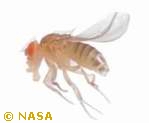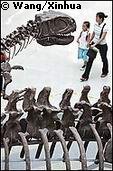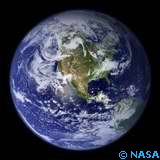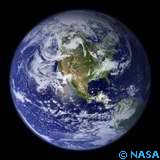Saturday, September 09, 2006
Hunters find mammoth tusk near Anaktuvuk Pass, Alaska

Pravda: Fairbanks - Caribou hunters have recovered a 7-foot-3-inch mammoth tusk from a creek bed south of the village of Anaktuvuk Pass.
The Ice Age specimen was spotted by Mickey Paneak, 36, in Manu Creek as he and his cousin Mike Morry, 33, ran after two wounded caribou about 8 miles south of their central Brooks Range community.
Jumping over the creek about a half mile above the John River, Paneak noticed something in the creek's shallow bed.
'At first I thought it was a mushroom,' said Paneak. After he and Morry caught and field-dressed their caribou, they went back to investigate.
'The base of the tusk was sticking straight up and its midsection had moss on it,' Paneak said.
The men removed the tusk from the creek bed and carefully transported it to the village of 300, roughly 250 miles northwest of Fairbanks.
--
Alternative news report: Anchorage Daily News (Alaska, US)
technorati tags: pravda, fairbanks, caribou, hunters, mammoth, tusk, creek, bed, ice+age, specimen, anchorage, news, alaska, us
Add to: CiteUlike | Connotea | Del.icio.us | Digg | Furl | Newsvine | Reddit | Yahoo
Ocean seep mollusks may share evolutionary history with other deep-sea creatures
The unusual mollusks of oceanic cold seeps - strange clams, mussels and sea snails that thrive in the sulfur and methane-rich environments - are on average older than the marine mollusk community as a whole, according to a new report in the 8 September issue of the journal Science, published by AAAS, the nonprofit science society.
On average, the first appearance of cold seep mollusk genera in the geological record is a full epoch earlier than that of marine mollusks in general, according to Steffen Kiel and Crispin Little of the University of Leeds (UK).
These findings indicate that the long evolutionary history of the seep mollusks is more similar to that of other deep-sea animals than to some of their mollusk contemporaries from other parts of the oceans.
Cold seeps may have been - and continue to be - safe harbors for the mollusks, protecting them from mass extinctions and possible abrupt oxygen changes in the seas, the researchers found. However, many deep-sea species outside of the cold seeps have also managed to ride out these changes. [Sulphur, Evolution News]
--
Based on "Cold-Seep Mollusks Are Older Than the General Marine Mollusk Fauna" (Abstract)
technorati tags: mollusks, cold, seeps, clams, sea+snails, sea, sulfur, methane, marine, fauna, journal, science, aaas, society, seep, genera, geological, record, epoch, kiel, little, university, leeds, uk, evolutionary, history, deep-sea, animals, oceans, mass, extinctions, oxygen, species, news, evolution, sulphur
Add to: CiteUlike | Connotea | Del.icio.us | Digg | Furl | Newsvine | Reddit | Yahoo
Sex is Good for Evolution, Researcher Says
University of British Columbia evolution biologist Sarah Otto has proof that sex is good for you - and the human species as a whole. Previous evolutionary theories - typically based on the assumption of an infinite population - have failed to find a clear role for sexual reproduction in evolution.
In a research paper published in today's edition of the journal Nature, Otto and co-author Peter Keightley from the University of Edinburgh's Institute of Evolutionary Biology explain that in real populations - which are never infinitely large - reproduction through sex breaks apart harmful mutations and creates new gene combinations, giving species better adaptability.
"If populations were infinitely large, all combinations of genes would already exist and sex would not be much use," says Otto, a zoology professor at UBC.
--
Based on "Interference among deleterious mutations favours sex and recombination in finite populations" (Abstract)
There is also an Editor's Summary: "The question of sex"
technorati tags: university, british+columbia, evolution, otto, proof, sex, good, human, species, infinite, population, sexual, reproduction, research, journal, nature, edinburgh, institute, evolutionary, biology, harmful, mutations, gene, adaptability, genes, zoology
Add to: CiteUlike | Connotea | Del.icio.us | Digg | Furl | Newsvine | Reddit | Yahoo
'Frankenstein protein' defies biology textbooks
New Scientist News Report: Molecular biology textbooks will need a little tweaking. Researchers have discovered a bizarre "Frankenstein protein" on the surface of leukaemia cells, with peptides stitched together in reverse order to that coded for by their DNA template.
It has always been believed that the structure of a protein is fixed by the DNA template that encodes it. But it now appears that the story does not end there. After the protein has been made, a little shuffling may occur.
The sequence of peptides - the building blocks of a protein - is not always the same as the template sequence of DNA that encodes them, say the researchers. It may also have implications for the development of peptide vaccines against cancer and infectious diseases.
The finding, by Edus Warren, at the Fred Hutchinson Cancer Research Center in Seattle, Washington, US, and colleagues, is very interesting "because nobody expected that to happen", says Ken-ichi Hanada, at the National Cancer Institute, Bethesda, Maryland, US. [Evolution]
--
Based on the journal Science paper "An Antigen Produced by Splicing of Noncontiguous Peptides in the Reverse Order" (Abstract).
technorati tags: new+scientist, news, molecular, biology, textbooks, frankenstein, protein, leukaemia, cells, peptides, dna, evolution, protein, development, vaccines, cancer, infectious, diseases, research, seattle, washington, us, institute, bethesda, maryland, journal, science, antigen
Add to: CiteUlike | Connotea | Del.icio.us | Digg | Furl | Newsvine | Reddit | Yahoo
Modern Humans, not Neandertals, may be evolution's 'odd man out'
 Could it be that in the great evolutionary 'family tree,' it is we Modern Humans, not the brow-ridged, large-nosed Neandertals, who are the odd uncle out?
Could it be that in the great evolutionary 'family tree,' it is we Modern Humans, not the brow-ridged, large-nosed Neandertals, who are the odd uncle out?
New research published in the August, 2006 journal Current Anthropology by Neandertal and early modern human expert, Erik Trinkaus, Ph.D., professor of anthropology at Washington University in St. Louis, suggests that rather than the standard straight line from chimps to early humans to us with Neandertals off on a side graph, it's equally valid, perhaps more valid based on the fossil record, that the line should extend from the common ancestor to the Neandertals, and Modern Humans should be the branch off that. [Evolution News, Neanderthals, Neanderthal, Chimpanzees]
-------
Based On "Modern Human versus Neandertal Evolutionary Distinctiveness"
Considerations of morphological variation among later Pleistocene human groups have focused principally on the distinctiveness of the Neandertals of western Eurasia relative to their predecessors and to penecontemporaneous and recent modern humans. In this discussion, there has been a dearth of attention of the degree to which modern humans are derived relative to earlier members of the genus Homo. Of 75 cranial, mandibular, dental, axial, and appendicular traits in which the Neandertals and/or modern humans are derived relative to Early and Middle Pleistocene Homo, approximately one-quarter are shared among Neandertals and modern humans, a similar percentage largely unique to the Neandertals, and about half largely unique to modern humans. The results are similar whether the Neandertals are compared with the earliest modern humans or with their Late Pleistocene and more recent modern human successors. Even though these figures could shift modestly through variation in trait selection and/or as a result of a more complete earlier Pleistocene Homo fossil record, it is apparent that modern humans are morphologically more derived than the Neandertals. Our focus should therefore be at least as much on the evolutionary biology of early and recent modern humans as on that of the Neandertals.
Books on Neanderthals from the Science and Evolution Bookshop: UK | US
Books on Human Origins from the Science and Evolution Bookshop: UK | US
technorati tags: washington, university, st.+louis, family+tree, modern, humans, neandertals, research, neandertal, journal, current, anthropology, chimps, chimpanzees, fossil, record, common, ancestor, evolution, news, neanderthal, neanderthals,
Add to: CiteUlike | Connotea | Del.icio.us | Digg | Furl | Newsvine | Reddit | Yahoo
Friday, September 08, 2006
The God Delusion by Richard Dawkins (Upcoming New York Academy of Sciences Event)

On October 18th, 2006 at the New York Academy of Sciences (NYAS) Richard Dawkins will discuss his latest book The God Delusion (US: Houghton Mifflin, UK: Bantam Press). Discover magazine recently called Richard Dawkins 'Darwin's Rottweiler' for his fierce and effective defense of evolution. Now Dawkins turns his intellect on religion.
Dawkins denounces religion's faulty logic and the suffering it causes. He critiques God in all his forms, from the sex-obsessed tyrant of the Old Testament to the more benign (but still illogical) Celestial Watchmaker favored by some Enlightenment thinkers. He eviscerates the major arguments for religion and demonstrates the supreme improbability of a supreme being.
Dawkins has fashioned an impassioned, rigorous rebuttal to religion, to be embraced by anyone who sputters at the inconsistencies and cruelties that riddle the Bible, bristles at the inanity of 'intelligent design,' or agonizes over fundamentalism in the Middle East - or Middle America. [Book Review, News]
-------
UPDATE: Saturday, September 23, 2006 - See "Richard Dawkins 'Foundation for Reason and Science' Website Opens"
and "Extracts from Richard Dawkins' new book 'The God Delusion' (+Video)"
The God Delusion is currently appearing on the 'Featured Books' page of the Evolution Book Store: UK | US - or go directly to the Amazon book webpage: UK | US
technorati tags: new+york, academy, sciences, richard+dawkins, dawkins, god, delusion, discover, magazine, darwin, rottweiler, defense, evolution, religion, sex, tyrant, old+testament, celestial, watchmaker, supreme, being, bible, intelligent+design, fundamentalism, middle+east, america, news, book, review, amazon
Add to: CiteUlike | Connotea | Del.icio.us | Digg | Furl | Newsvine | Reddit | Yahoo
Intelligent Design Discussion: 'This Week' - American Center for Law and Justice (Video)
The above link goes to the American Center for Law and Justice (ACLJ) 'This Week' program archive page. It looks like programs may only be available for one month so I'll monitor the page and update this post accordingly.
09.08.06 ACLJ This Week - Intelligent Design:
Join ACLJ Chief Counsel Jay Sekulow for 30 minutes of thought-provoking analysis of current issues. This week we are joined by Senator Jeff Sessions (R-AL) to talk about immigration and national security plus the ACLJ Legal Panel to discuss Intelligent Design. Also this week, Chief Counsel Jay Sekulow steps into the radio studio to respond to callers' questions. View the full 30 minute program here...
[News, Video, ID, Evolution]
technorati tags: american, center, law, justice, aclj, this+week, program, archive, page, chief, counsel, analysis, current, issues, senator, sessions, immigration, national, security, legal, panel, id, design, radio, studio, video, view, news, evolution, intelligent+design
Add to: CiteUlike | Connotea | Del.icio.us | Digg | Furl | Newsvine | Reddit | Yahoo
Genetic Surprise Confirms Neglected 70-Year-Old Evolutionary Theory
 Mobile Genes Found to Pressure Species Formation
Mobile Genes Found to Pressure Species Formation
Biologists at the University of Rochester have discovered that an old and relatively unpopular theory about how a single species can split in two turns out to be accurate after all, and acting in nature.
The finding, reported in today's issue of the journal Science (September 8, 2006), reveals that scientists must reassess the processes involved in the origin of species. The beginnings of speciation, suggests the paper, can be triggered by genes that change their locations in a genome...
...Masly brought together two species of fruit fly - the workhorses of the genetics world - to see what genes were active when they were crossbred. One species, Drosophila melanogaster, had its genome already sequenced, making that part of the job much easier. The second species, Drosophila simulans, was still in the process of being sequenced, which meant much of the work had to be done by hand by Masly and his collaborators... [News, New York]
--
Based on "Gene Transposition as a Cause of Hybrid Sterility in Drosophila" (Abstract)
technorati tags: mobile+genes, species, formation, university, rochester, new+york, unpopular, theory, journal, science, origin, speciation, genes, genome, fruit-fly, drosophila, melanogaster, hybrid, sterility, gene, news, transposition
Add to: CiteUlike | Connotea | Del.icio.us | Digg | Furl | Newsvine | Reddit | Yahoo
Global warming taking earth back to dinosaur era
From the Washington Post: Norwich UK (Reuters) - Global warming over the coming century could mean a return of temperatures last seen in the age of the dinosaur and lead to the extinction of up to half of all species, a scientist said on Thursday.
Not only will carbon dioxide levels be at the highest levels for 24 million years, but global average temperatures will be higher than for up to 10 million years, said Chris Thomas of the University of York.
Between 10 and 99 percent of species will be faced with atmospheric conditions that last existed before they evolved, and as a result from 10-50 percent of them could disappear.
"We may very well already be on the breaking edge of a wave of mass extinctions," Thomas told the annual meeting of the British Association for the Advancement of Science. [News, Norfolk, BA, Dinosaurs]
technorati tags: norwich, uk, reuters, global+warming, temperatures, age, dinosaur, extinction, species, carbon+dioxide, levels, average, university, york, mass, british, association, advancement, science, ba, norfolk, news, washington+post, dinosaurs
Add to: CiteUlike | Connotea | Del.icio.us | Digg | Furl | Newsvine | Reddit | Yahoo
Earth-like planets may be more common than once thought, says new University of Colorado-Pennsylvania State study

More than one-third of the giant planet systems recently detected outside Earth's solar system may harbor Earth-like planets, many covered in deep oceans with potential for life, according to a new study led by the University of Colorado at Boulder and Pennsylvania State University.
The study focuses on a type of planetary system unlike our solar system that contains gas giants known as "Hot Jupiters" orbiting extremely close to their parent stars - even closer than Mercury to our sun, said CU-Boulder researcher Sean Raymond. Such gas giants are believed to have migrated inward toward their parent stars as the planetary systems were forming, disrupting the space environment and triggering the formation of ocean-covered, Earth-like planets in a "habitable zone" conducive to the evolution of life, according to the new study.
"Exotic Earths: Forming Habitable Worlds with Giant Planet Migration" was published in the Sept. 8 issue of Science and authored by Raymond, Avi Mandell of both Penn State and Goddard Space Flight Center in Greenbelt, Md., and Steinn Sigurdsson of Penn State.
The study indicates Hot Jupiters push and pull proto-planetary disk material during their journeys, flinging rocky debris outward where it is likely to coalesce into Earth-like planets, said Raymond. At the same time, turbulent forces from the dense surrounding gas slow down the orbits of small, icy bodies in the outer reaches of the disk, causing them to spiral inward and deliver water to the fledgling planets. Such planets may eventually host oceans several miles deep, according to the study.
"These gas giants cause quite a ruckus," said Raymond of CU-Boulder's Laboratory for Atmospheric and Space Physics. "We now think there is a new class of ocean-covered, and possibly habitable, planets in solar systems unlike our own."
Scientists had previously assumed that as Hot Jupiters plowed through proto-planetary material on their inward migrations toward parent stars, all the surrounding material would be "vacuumed up" or ejected from the system, he said. "The new models indicate these early ideas were probably wrong," said Raymond.
The research team ran exhaustive simulations lasting more than eight months each on more than a dozen desktop computers, starting with proto-planetary disks containing more than 1,000 moon-sized, rocky and icy bodies. The initial conditions for each computer model were based on current theories of how planets form in our own solar system and simulated about 200 million years of planetary evolution.
The team concluded that about one of every three known planetary systems could have evolved as-yet-undetected Earth-like planets in so-called habitable zones like the one Earth is in, he said. A whopping 40 percent of the 200 or so known planets around other stars are Hot Jupiters, although the percentage probably will decrease as more distant planets are discovered, said Raymond.
In addition to Earth-like planets that form in habitable zones outside Hot Jupiters, the simulations showed some rocky planets known as "Hot Earths" often form inside the orbits of Hot Jupiters, said Raymond. A Hot Earth, with a radius twice that of our own Earth, was discovered in 2005 in a nearby star system orbiting just 2 million miles from its parent star by a team led by University of California, Berkeley, planetary scientist Geoffrey Marcy.
The new simulations showed both Hot Earths and Earth-like planets in habitable zones formed with large amounts of water, up to 100 times the water present on Earth today, he said. The models indicate such water-rich planets would probably contain a lower percentage of iron - which may be important for the evolution and possible oxygenation of evolving atmospheres - than Earth, he said.
According to the team's simulations, Hot Earths can form astoundingly fast, in just 100,000 years or so. Earth-like planets in habitable zones form much more slowly, taking up to 200 million years, said Raymond. Geologists believe Earth took about 30 million years to 50 million years to fully form.
"I think there are definitely habitable planets out there," said Raymond. "But any life on these planets could be very different from ours. There are a lot of evolutionary steps in between the formation of such planets in other systems and the presence of life forms looking back at us."
The new research effort may allow planet hunters to determine "rough limits" indicating where to search for habitable planets in known systems of giant planets, according to the team, whose research was funded by NASA's Astrobiology Institute headquartered at the NASA Ames Research Center in Moffett Field, Calif.
"Upcoming space missions such as NASA's Kepler and Terrestrial Planet finder and ESA's COROT and Darwin will discover and eventually characterize Earth-like planets around other stars," wrote the authors in Science. "We predict that a significant fraction of systems with close-in giant planets will be found to have a Hot Earth or potentially habitable, water-rich planets on stable orbits in the Habitable Zone."
Source: CU-Boulder Press Release 7th September 2006
------
Based on the paper:
Exotic Earths: Forming Habitable Worlds with Giant Planet Migration
Sean N. Raymond, Avi M. Mandell, Steinn Sigurdsson
Science 8 September 2006:
Vol. 313. no. 5792, pp. 1413 - 1416
DOI: 10.1126/science.1130461
Close-in giant planets (e.g., "hot Jupiters") are thought to form far from their host stars and migrate inward, through the terrestrial planet zone, via torques with a massive gaseous disk. Here we simulate terrestrial planet growth during and after giant planet migration. Several-Earth-mass planets also form interior to the migrating jovian planet, analogous to recently discovered "hot Earths." Very-water-rich, Earth-mass planets form from surviving material outside the giant planet's orbit, often in the habitable zone and with low orbital eccentricities. More than a third of the known systems of giant planets may harbor Earth-like planets.
Add to: CiteUlike | Connotea | Del.icio.us | Digg | Furl | Newsvine | Reddit | Yahoo
Thursday, September 07, 2006
Scientist's persistence sheds light on marine science riddle (The 'Island Rule')
Philadelphia - When he started compiling an online database of seashells 15 years ago, Dr. Gary Rosenberg did not envision that his meticulous record-keeping would eventually shed light on a 40-year-old evolutionary debate.
The debate involves the mechanism underlying the island rule: that small animals isolated on islands evolve to be larger than their mainland relatives, and large animals evolve to be smaller. In a paper to be published in September in the Journal of Biogeography, 'The Island Rule and the Evolution of Body Size in the Deep Sea,' Rosenberg and his co-authors apply the island rule to deep-sea animals using Rosenberg's detailed database of marine snails. They find a similar pattern: when species colonize the deep sea, large-bodied species become smaller and small-bodied species become larger. [News: Marine Science Riddle]
--
"The Island Rule and the Evolution of Body Size in the Deep Sea" is an open access paper.
technorati tags: philadelphia, news, online, database, gary, rosenberg, evolutionary, debate, mechanism, island+rule, island, rule, small, animals, evolve, large, mainland, journal, biogeography, evolution, body+size, deep+sea, sea, marine, science, snails, pattern, species, open+access
Add to: CiteUlike | Connotea | Del.icio.us | Digg | Furl | Newsvine | Reddit | Yahoo
Museum of the Rockies: Jack Horner knows his dinosaurs (Video)
 Bozeman, Montana (CNN) -- From the time he was a kid digging holes in his backyard, paleontologist John 'Jack' Horner knew what he wanted to be when he grew up.
Bozeman, Montana (CNN) -- From the time he was a kid digging holes in his backyard, paleontologist John 'Jack' Horner knew what he wanted to be when he grew up.
'I found my first dinosaur bone when I was 6, growing up in Montana. Ever since then I've been interested in dinosaurs,' Horner wrote in his 1993 book 'The Complete T-Rex.'*
As the curator of the Museum of the Rockies for the past 24 years, he has collected an array of dinosaur fossils from many digs in a desolate region known as the Hell Creek Formation in eastern Montana's Badlands. (Video link here: 'Watch as Horner explains Montana's dinosaur connection')
His research has made him a well-known paleontologist, and he's considered a model for the lead character in the blockbuster 'Jurassic Park' films, on which he also was a consultant. [News]
--
*Jack Horner's most recent book is "Dinosaurs Under the Big Sky": UK | US
Museum of the Rockies homepage
technorati tags: bozeman, montana, cnn, jack, horner, dinosaurs, t-rex, curator, museum, rockies, dinosaur, fossils, hell, creek, formation, badlands, jurassic+park, films, jurassic, news, research
Add to: CiteUlike | Connotea | Del.icio.us | Digg | Furl | Newsvine | Reddit | Yahoo
Oldest known fossilised eye capsules from jawed fishes
A University of Queensland researcher has uncovered the oldest known fossilised eye capsules from jawed fishes.
Palaeontologist Dr Carole Burrow, from UQ's School of Integrative Biology, discovered the 410 million-year-old specimens in central New South Wales, and her research is shedding new light on the evolution of eyes in early vertebrates.
"Even though they probably have no modern descendants, placoderms were the most primitive group of jawed fish, and their eyeballs give us an insight into what came before modern fish," Dr Burrow said.
Dr Burrow's research was also the first to use x-ray microtomography to investigate 3-D structure of small vertebrate fossils.
Previous work on the few other fossil eye capsules known have been based on visual examinations or fractured sections. [Fossilized, News, Tomography, NSW]
--
Based on the journal Micron paper "X-ray microtomography of 410 million-year-old optic capsules from placoderm fishes." (Abstract)
technorati tags: university, queensland, fossilised, eye, capsules, jawed, fishes, optic, biology, research, new+south+wales, nsw, eyes, evolution, vertebrates, modern, descendants, primitive, eyeballs, fish, x-ray, tomography, 3-d, fossils, fossilized, news
Add to: CiteUlike | Connotea | Del.icio.us | Digg | Furl | Newsvine | Reddit | Yahoo
Science theories may face scrutiny (Ohio School Board Controversy)
Columbus, Ohio - The state school board will consider Monday whether the debate over intelligent design vs. evolution should have a second coming.
At the request of the board, the Ohio Department of Education drafted a nine-page "Controversial Issues Template."
Supporters say the template provides guidelines for discussion; opponents say the document is another attempt to single out and cast doubt on widely accepted scientific theories.
The nine-page document itself is evolutionary. Earlier this year, a proposal was to encourage debate of specific issues: Evolution, global warming and stem cell research.
Now, it encourages students to conduct research and have open discussion in the classroom.
The template is expected to get its first airing when the board and its committees hold their monthly three-day meetings in Columbus next week. [Controversy, News]
technorati tags: columbus, ohio, state, school, board, intelligent+design, evolution, education, global+warming, stem, cell, research, students, discussion, classroom, controversy, news
Add to: CiteUlike | Connotea | Del.icio.us | Digg | Furl | Newsvine | Reddit | Yahoo
Proved - Monkey see, monkey do (Text , Videos)
 Monkeys "imitate with a purpose", matching their behaviour to others' as a form of social learning, researchers report.
Monkeys "imitate with a purpose", matching their behaviour to others' as a form of social learning, researchers report.
Such mimicry has previously been seen only in great apes - including humans and chimps - but now Italian researchers have recorded wonderful footage of the phenomenon in newborn rhesus macaques.
Human newborns have a known capacity to mimic certain specific adult facial expressions, including mouth opening and tongue protrusion. The so-called imitation period lasts up to three months in human infants and two months in chimps. [New Scientist News: Chimpanzee, Behavior]
--
The above report contains links to two videos: "Old Macaque Infant Imitating Mouth Opening" and "Old Macaque Infant Imitating Tongue Protrusion".
Based on the open access PLoS Biology paper "Neonatal Imitation in Rhesus Macaques" which contains a third video "Lip Smacking Exchanges in a Naturalistic Setting between Mother and Infant Macaques".
technorati tags: monkeys, imitate, behaviour, behavior, social, learning, mimicry, great, apes, humans, chimps, phenomenon, newborn, rhesus, macaques, human, mimic, adult, mouth, tongue, new+scientist, news, infant, videos, plos, biology, plos+biology, macaque, video, lip, mother, chimpanzee, open+access
Add to: CiteUlike | Connotea | Del.icio.us | Digg | Furl | Newsvine | Reddit | Yahoo
Wednesday, September 06, 2006
Scientists crack genetic secrets of human egg
Michigan State University News: East Lansing - The human egg's ability to transform into a new life, or into new cells that may someday save lives, is well documented. The mystery lies in the mechanics - in how a single cell can transform so nimbly.
Scientists at Michigan State University report this week in the Proceedings of the National Academy of Sciences (PNAS) that they have identified genes unique to the human egg. The identification opens the way to understanding these genes' functions, which may lead to solving problems from infertility to degenerative diseases.
"What's in the egg to have that power?" asked Jose Cibelli, MSU professor of physiology and animal science. "Some of those genes are responsible for the magic trick that the egg has. This paper takes a peek at what genes are in the egg waiting to make these changes."
--
Based on the PNAS paper "The transcriptome of human oocytes" (Abstract)
technorati tags: Michigan, State, University, News, East+Lansing, human, egg, life, cells, mystery, mechanics, cell, proceedings, national, academy, sciences, genes, infertility, degenerative, diseases, egg, msu, physiology, animal, science, pnas
Add to: CiteUlike | Connotea | Del.icio.us | Digg | Furl | Newsvine | Reddit | Yahoo
Tuesday, September 05, 2006
How did our Ancestors' Minds really work?
 How did our evolutionary ancestors make sense of their world? What strategies did they use, for example, to find food? Fossils do not preserve thoughts, so we have so far been unable to glean any insights into the cognitive structure of our ancestors. However, in a study recently published in Current Biology (September 5, 2006), researchers at the Max Planck Institute for Psycholinguistics and their colleagues at the Max Planck Institute for Evolutionary Anthropology were able to find answers to these questions using an alternative research method: comparative psychological research.
How did our evolutionary ancestors make sense of their world? What strategies did they use, for example, to find food? Fossils do not preserve thoughts, so we have so far been unable to glean any insights into the cognitive structure of our ancestors. However, in a study recently published in Current Biology (September 5, 2006), researchers at the Max Planck Institute for Psycholinguistics and their colleagues at the Max Planck Institute for Evolutionary Anthropology were able to find answers to these questions using an alternative research method: comparative psychological research.
In this way, they discovered that some of the strategies shaped by evolution are evidently masked very early on by the cognitive development process unique to humans. [News]
--
Based on "Evolutionary Psychology of Spatial Representations in the Hominidae" (Abstract)
technorati tags: evolutionary, ancestors, fossils, cognitive, study, current, biology, max, planck, institute, anthropology, research, psychology, spatial, development, process, humans, news
Add to: CiteUlike | Connotea | Del.icio.us | Digg | Furl | Newsvine | Reddit | Yahoo
Pope's debate group to publish evolution talks
Paris (Reuters) - Pope Benedict and his former doctoral students plan to publish the proceedings of their weekend seminar on evolution (see Sunday's entry "Intelligent Design: an evolving concept (Die Welt, Germany)") to promote a dialogue between faith and science on the origins of life, participants said.
The minutes, to be issued later this year, will show how Catholic theologians see no contradiction between their belief in divine creation and the scientific theory of evolution, they said after the annual closed-door meeting ended on Sunday.
The theory of evolution has long been controversial in the United States, where conservative Christians oppose teaching it in public schools and promote rival views such as 'intelligent design' that scientists reject as religion in disguise.
--
A Catholic News Service report ("Participant: Pope's closed seminar didn't focus on intelligent design") states:
Rome (CNS) - Pope Benedict XVI spent a day guiding a closed-door symposium on evolution, but the U.S. controversy over intelligent design did not figure much in the discussions, a participant said.
The occasion was the annual gathering of former doctoral students of the pope September 1-3; it was hosted in part by the pontiff at his summer villa in Castel Gandolfo, outside Rome.
technorati tags: paris, reuters, pope, benedict, weekend, seminar, evolution, intelligent+design, die+welt, germany, faith, science, origins, life, roman, catholic, divine, creation, belief, theory, united+states, christians, public+schools, religion, news, service, rome, cns, benedict+XVI, symposium, u.s., pontiff, villa, castel, gondolfo
Add to: CiteUlike | Connotea | Del.icio.us | Digg | Furl | Newsvine | Reddit | Yahoo
Furious evolution debate hits Kenyan museum (Nairobi)
Nairobi - The global debate between scientists and conservative Christians over evolution has hit Kenya, where an exhibit of one of the world's finest collections of early hominid fossils is under threat.
As the famed National Museum of Kenya (NMK: homepage) prepares to re-open next year after massive EU-funded renovations, evangelicals are demanding the display be removed or at least shunted to a less prominent location.
The Origins Of Man exhibit, comprised of prehistoric finds from around Africa's Great Rift Valley considered by many to be the cradle of humanity, is offensive as it promotes Charles Darwin's theory of evolution, they say. [News]
technorati tags: nairobi, global, debate, christians, evolution, kenya, hominid, fossils, national, museum, nmk, eu, origins, man, exhibit, prehistoric, africa, great, rift, valley, cradle, humanity, charles, darwin, theory, news
Add to: CiteUlike | Connotea | Del.icio.us | Digg | Furl | Newsvine | Reddit | Yahoo
Evolution keeps us superstitious. Now that's lucky (The Times UK)
 Humans have evolved over tens of thousands of years to be susceptible to supernatural beliefs, a psychologist has claimed.
Humans have evolved over tens of thousands of years to be susceptible to supernatural beliefs, a psychologist has claimed.
Religion and other forms of magical thinking continue to thrive - despite the lack of evidence and advance of science - because people are naturally biased to accept a role for the irrational, said Bruce Hood (homepage), Professor of Experimental Psychology at the University of Bristol.
This evolved credulity suggests that it would be impossible to root out belief in ideas such as creationism and paranormal phenomena, even though they have been countered by evidence and are held as a matter of faith alone...
...Even the most rational people behave in irrational ways and supernatural beliefs are part of the same continuum, Professor Hood told the British Association Festival of Science in Norwich yesterday. [News, Norfolk, The Times UK, Superstitious]
--
The BA Festival of Science runs from 2-9 September 2006 (more info)
technorati tags: humans, evolved, supernatural, beliefs, hood, psychologist, professor, religion, psychology, university, bristol, creationism, paranormal, phenomena, faith, rational, british, association, festival, science, norwich, norfolk, uk, the+times, news, superstitious
Add to: CiteUlike | Connotea | Del.icio.us | Digg | Furl | Newsvine | Reddit | Yahoo
Scientist Says Lots of Dinosaurs Remain (Washington Post)
 From The Washington Post: Good news for dinosaur fans: There are probably a lot more of them waiting to be discovered. At least, their fossils are.
From The Washington Post: Good news for dinosaur fans: There are probably a lot more of them waiting to be discovered. At least, their fossils are.
Peter Dodson of the University of Pennsylvania and Steve Wang of Swarthmore College estimate that 71 percent of all dinosaur genera - groups of dinosaur species - have yet to be discovered.
"It's a safe bet that a child born today could expect a very fruitful career in dinosaur paleontology," Dodson said in a statement.
The estimate appears in Tuesday's issue of Proceedings of the National Academy of Sciences (PNAS). [News, Palaeontology]
Continued at "Scientist Says Lots of Dinosaurs Remain"
-------
Also reported on the Washington Post's 'Findings' page.
The PNAS paper is "Estimating the diversity of dinosaurs" (Abstract)
Books on Dinosaurs from the Science and Evolution Bookshop: UK | US
Books on Paleontology from the Science and Evolution Bookshop: UK | US
technorati tags: washington+post, news, dinosaur, fossils, university, pennsylvania, swarthmore, college, genera, species, paleontology, palaeontology, proceedings, national, academy, sciences, pnas, dinosaurs
Add to: CiteUlike | Connotea | Del.icio.us | Digg | Furl | Newsvine | Reddit | Yahoo
Ocean Microbe Census Discovers Diverse World Of Rare Bacteria
A startling revelation about the number of different kinds of bacteria in the deep-sea raises fundamental new questions about microbial life and evolution in the oceans.
In a paper published in the USA by the Proceedings of the National Academy of Sciences journal (PNAS July 31, 2006 online early edition), scientists reveal marine microbial diversity may be some 10 to 100 times more than expected, and the vast majority are previously unknown, low-abundance organisms theorized to play an important role in the marine environment as part of a "rare biosphere."
"These observations blow away all previous estimates of bacterial diversity in the ocean," says lead author Mitchell L. Sogin
--
Based on the open access paper Microbial diversity in the deep sea and the underexplored "rare biosphere": Abstract | Full Text
technorati tags: bacteria, deep+sea, sea, microbial, life, evolution, oceans, proceedings, national, academy, sciences, pnas, marine, diversity, organisms, rare, biosphere, ocean, open+access
Add to: CiteUlike | Connotea | Del.icio.us | Digg | Furl | Newsvine | Reddit | Yahoo
Monday, September 04, 2006
Evolution, not just gluttony, led to obesity pandemic (Sydney Conference)
Sydney, Australia (Reuters) - Evolution and the environment, not just gluttony, has led to a global obesity pandemic, with an estimated 1.5 billion people overweight - more than the number of undernourished people - an obesity conference was told on Monday.
The mounting epidemic of obesity in children would see many die before their parents, said Kate Steinbeck, co-chair of the 10th International Congress on Obesity in Sydney.
"This is the first generation in history where children may die before their parents," Steinbeck told the conference...
...Steinbeck said fighting obesity was not simply a matter of people eating less and exercising more, but discovering environmental and genetic contributors to obesity. [News]
--
The 10th International Congress on Obesity runs from 3-8th September 2006: Webpage | Program at a Glance
technorati tags: sydney, australia, reuters, evolution, environment, gluttony, obesity, pandemic, overweight, epidemic, children, steinbeck, 10th, international, conference, genetic, news
Add to: CiteUlike | Connotea | Del.icio.us | Digg | Furl | Newsvine | Reddit | Yahoo
Snakes on the Brain (New York Times)
 Op-Ed article by Lynne Isbell: Snakes hit a nerve in people. How else to explain why the movie "Snakes on a Plane" became an Internet sensation months before it was released in theaters? The very idea was all it took to rouse attention.
Op-Ed article by Lynne Isbell: Snakes hit a nerve in people. How else to explain why the movie "Snakes on a Plane" became an Internet sensation months before it was released in theaters? The very idea was all it took to rouse attention.
That humans have been afraid of snakes for a long time is not a fresh observation; that this fear may be entwined with our development as a species is. New anthropological evidence suggests that snakes, as predators, may have figured prominently in the evolution of primate vision - the ability, shared by humans, apes and monkeys, to see the world in crisp, three-dimensional living color. [Theatres, Colour]
--
The blog report of the news release "Fear of Snakes Drove Pre-Human Evolution" (posted Saturday, July 22, 2006) contains this link to the Abstract of Isbell's paper "Snakes as agents of evolutionary change in primate brains" (Journal of Human Evolution).
technorati tags: op-ed, isbell, snakes, people, movie, plane, internet, sensation, theaters, theatres, humans, afraid, fear, observation, development, species, anthropological, evidence, predators, evolution, primate, vision, apes, monkeys, blog, evolutionary, change, brains
Add to: CiteUlike | Connotea | Del.icio.us | Digg | Furl | Newsvine | Reddit | Yahoo
Sunday, September 03, 2006
The End of Eden: Gaia and James Lovelock (Washington Post)

...Sulfurous musings are not Lovelock's characteristic style; he's no Book of Revelation apocalyptic. In his 88th year, he remains one of the world's most inventive scientists, an Englishman of humor and erudition, with an oenophile's taste for delicious controversy. Four decades ago, his discovery that ozone-destroying chemicals were piling up in the atmosphere started the world's governments down a path toward repair. Not long after that, Lovelock proposed the theory known as Gaia, which holds that Earth acts like a living organism, a self-regulating system balanced to allow life to flourish.
Biologists dismissed this as heresy, running counter to Darwin's theory of evolution. Today one could reasonably argue that Gaia theory has transformed scientific understanding of the Earth.
Now Lovelock has turned his attention to global warming, writing "The Revenge of Gaia: Earth's Climate Crisis and the Fate of Humanity" (Currently appearing on the 'Featured Books' page of the Evolution Book Store: UK | US - or go directly to the Amazon book webpage: UK | US). [Washington Post]
-------
See "Gaia and accelerated climate change (ABC Australia Audio)" (posted earlier today).
Books on Global Warming from the Science and Evolution Bookshop: UK | US
technorati tags: lovelock, washington+post, james, controversy, discovery, ozone, chemicals, atmosphere, theory, gaia, earth, living, organism, system, life, darwin, evolution, revenge, fate, humanity, climate, change
Add to: CiteUlike | Connotea | Del.icio.us | Digg | Furl | Newsvine | Reddit | Yahoo
Intelligent Design: an evolving concept (Die Welt, Germany)
This coming Friday, September 8, 2006, Pope Benedict XVI will conduct a seminar at Castel Gondolfo outside of Rome. For years while still a professor in Germany Joseph Ratzinger gathered students for a seminar on the issues facing the contemporary world. This year the focus is on the controversy between Intelligent Design and Evolution...
...Let us consider that all human ideas and concepts result from an evolutionary pattern of thinking. Breakthroughs are the result of years of painstaking and cumulative work of many: it evolves. I am not a 'pantheist' but a 'pan-entheist' i.e. I believe that all is in God and not that God is in everything or anything in particular. There is only one reality, and for the lack of a better term we call it God; the sum total of all universal energies. Is there intelligence in this universal energy? [News]
--
Die Welt Weblog, Germany - Written by Rabbi Eliyahu Shalem of Jerusalem, Israel
technorati tags: pope, benedict+XVI, benedict, castel, gondolfo, rome, germany, joseph, ratzinger, students, seminar, intelligent+design, evolution, human, ideas, concepts, evolutionary, pattern, evolves, pantheist, god, intelligence, universal, news, die+welt, weblog, rabbi, jerusalem, israel
Add to: CiteUlike | Connotea | Del.icio.us | Digg | Furl | Newsvine | Reddit | Yahoo
Are there natural limits to evolution? (Pravda, Russia)
 Is it possible to be scientifically-minded and not to believe in evolution? Well, it is important to distinguish between micro-evolution and macro-evolution. Micro-evolution (or horizontal evolution) which involves variations within biological 'kinds' (such as the varieties of dogs, cats, horses, cows, etc.) is truly scientific, but macro-evolution (or vertical evolution) which teaches that variations in nature can occur and did occur across biological 'kinds' (especially from simpler kinds to more complex ones) has never been scientifically proved even though it is almost universally taught and taken for granted as being a scientific fact. But, as we shall see, not only is macro-evolution not scientifically proven but it actually contradicts well-established facts and laws of modern science.
Is it possible to be scientifically-minded and not to believe in evolution? Well, it is important to distinguish between micro-evolution and macro-evolution. Micro-evolution (or horizontal evolution) which involves variations within biological 'kinds' (such as the varieties of dogs, cats, horses, cows, etc.) is truly scientific, but macro-evolution (or vertical evolution) which teaches that variations in nature can occur and did occur across biological 'kinds' (especially from simpler kinds to more complex ones) has never been scientifically proved even though it is almost universally taught and taken for granted as being a scientific fact. But, as we shall see, not only is macro-evolution not scientifically proven but it actually contradicts well-established facts and laws of modern science.
The famous nineteenth century naturalist Charles Darwin assumed that because micro-evolution ocurrs in nature then macro-evolution must also be possible, but the modern scientific evidence from genetics supports only the possibility of micro-evolution, or limited biological variation, occurring naturally in living things. [Pravda, Russia, Pravda.ru]
technorati tags: evolution, micro, macro, horizontal, variations, biological, vertical, complex, scientific, fact, laws, modern, science, charles, darwin, naturalist, nature, genetics, pravda, russia
Add to: CiteUlike | Connotea | Del.icio.us | Digg | Furl | Newsvine | Reddit | Yahoo
Why Darwinism Survives
From The Christian Post: 'What is it about even the slightest dissent from Darwin's theory of natural selection that drives liberal elites (and even some conservative elites) bonkers?' Adam Wolfson asks that question in 'Survival of the Evolution Debate: Why Darwin Is Still a Lightning Rod,' an essay published in the January 16, 2006 edition of The Weekly Standard.
Wolfson now serves as consulting editor of Commentary magazine and a senior fellow at the Ethics and Public Policy Center in Washington. He formally served as editor of The Public Interest, which was for many years one of America's premier intellectual journals.
In this essay, Wolfson wonders aloud why Darwin, together with his theory of evolution, still serves as such a lightning rod for controversy in American culture. In one sense, Wolfson seizes the opportunity to suggest that controversies over Darwinism are often, if not usually, easily traced to the fact that intellectual elites will accept no criticism of Darwinism whatsoever. [News]
--
'Survival of the Evolution Debate: Why Darwin Is Still a Lightning Rod,' is an open access article available here.
technorati tags: christian, post, darwin, theory, natural+selection, survival, evolution, debate, lightning, rod, weekly, standard, commentary, magazine, ethics, washington, america, intellectual, journals, controversy, darwinism, criticism
Add to: CiteUlike | Connotea | Del.icio.us | Digg | Furl | Newsvine | Reddit | Yahoo
Gaia and accelerated climate change (ABC Australia Audio)
 ABC Australia's Science Show audio: It was in the late 1960s that James Lovelock first suggested the Earth acted as a single organism. He named his observation, Gaia. He was ridiculed and the idea was ignored for decades. It wasn't until the end of the 90s that a new branch of science grew out of his theory; that of Earth System Science. Now, as the effects of climate change have become obvious for all to see, James Lovelock has taken his theory further in a book, "The Revenge of Gaia: Why the Earth Is Fighting Back". Lovelock claims we've passed the point of no return with climate change. This week, The Science Show traces the growth of Lovelock's theory and gathers views from climate scientists about his apocalyptic vision. [News]
ABC Australia's Science Show audio: It was in the late 1960s that James Lovelock first suggested the Earth acted as a single organism. He named his observation, Gaia. He was ridiculed and the idea was ignored for decades. It wasn't until the end of the 90s that a new branch of science grew out of his theory; that of Earth System Science. Now, as the effects of climate change have become obvious for all to see, James Lovelock has taken his theory further in a book, "The Revenge of Gaia: Why the Earth Is Fighting Back". Lovelock claims we've passed the point of no return with climate change. This week, The Science Show traces the growth of Lovelock's theory and gathers views from climate scientists about his apocalyptic vision. [News]
-------
"The Revenge of Gaia: Why the Earth Is Fighting Back" is currently appearing on the 'Featured Books' page of the Evolution Book Store: UK | US - or go directly to the Amazon book webpage: UK | US
Books on Global Warming from the Science and Evolution Bookshop: UK | US
technorati tags: abc, australia, science, show, audio, james+lovelock, earth, single, organism, gaia, system, climate+change, theory, revenge, lovelock, climate, apocalyptic, vision, news
Add to: CiteUlike | Connotea | Del.icio.us | Digg | Furl | Newsvine | Reddit | Yahoo